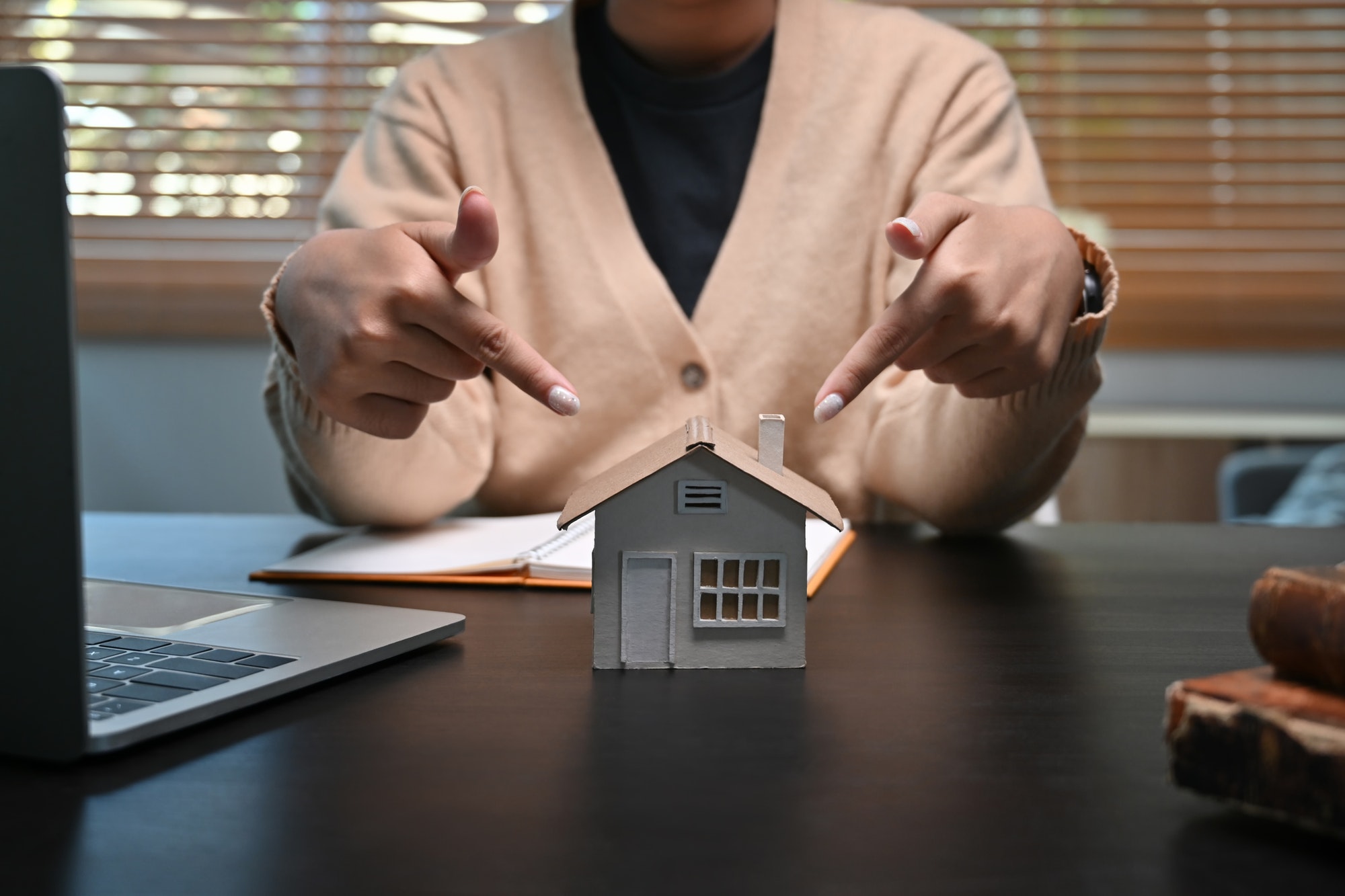Introduction
The upside-down mortgage policy has become a pressing concern for homeowners across the nation. It refers to a situation where the outstanding balance on a mortgage exceeds the current value of the property. This predicament, also known as negative equity or underwater mortgage, has multifaceted implications for individuals, the housing market, and the economy as a whole. Explore upside down mortgage policy when your home value is low. Discover insights for financial stability learn underwater mortgage or mortgage is underwater.
Upside-down Mortgage: Meaning
An upside-down mortgage, also known as negative equity or an underwater mortgage, refers to a situation where the outstanding balance owed on a mortgage is higher than Current market value of the property securing that mortgage.
In simpler terms, when a homeowner owes more money on their mortgage than the home is worth in the current real estate market, they are said to be in an upside-down mortgage situation. This discrepancy between the mortgage balance and the property’s value can lead to various challenges for homeowners, including financial strain, limited options for selling or refinancing the property, and constraints on mobility.
Factors of an Upside-down Mortgage
Several factors contribute to the occurrence of an upside-down mortgage situation, where the outstanding mortgage balance surpasses current market value of the property. These factors include:
- Property Market Fluctuations: Declines in property values due to changes in the housing market can significantly impact a property’s worth. Economic downturns, local market conditions, or oversupply of properties can lead to decreased property values, causing mortgages to become upside-down.
- High Loan-to-Value Ratio (LTV): Obtaining a mortgage with a high loan-to-value ratio, meaning a small down payment compared to the property’s value, increases the risk of negative equity. Borrowers with low down payments are more susceptible to owing more than the property’s value, especially if property values decrease.
- Interest Rates and Loan Terms: High-interest rates on mortgages or adjustable rate mortgage (ARMs) can contribute to negative equity. If interest rates rise significantly or loan terms lead to higher monthly payments, homeowners might struggle to keep up with payments, exacerbating negative equity.
- Property Improvements or Additional Loans: Taking out home equity loans, second mortgages, or making significant property improvements that do not increase the property’s value can contribute to negative equity. If the property’s value doesn’t appreciate as expected, additional loans can exacerbate the gap between the mortgage balance and property value.
- Economic Conditions and Unforeseen Events: Economic downturns, job losses, or unforeseen events such as natural disasters can impact property values and homeowners’ ability to maintain mortgage payments. Such circumstances can swiftly push a mortgage into negative equity territory.
Impact on Homeowners
The impact of an upside-down mortgage on homeowners is profound and multifaceted, encompassing various aspects of their financial stability and personal well-being.
- Financial Strain: Foremost, homeowners with negative equity face substantial financial strain. They owe more on their mortgage than their property is worth, leading to a significant loss of wealth. This situation limits their financial flexibility and can result in difficulties meeting other financial obligations.
- Inability to Sell or Move: Negative equity often impedes homeowners from selling their homes or relocating. The sale price of the property may not cover the outstanding mortgage balance, leaving them stuck in a property they might want or need to leave due to job changes or personal reasons.
- Limited Refinancing Options: Refinancing to secure better mortgage terms becomes a challenge when the property’s value is lower than the outstanding mortgage. Homeowners find it challenging to take advantage of lower interest rates or favorable loan terms available in the market.
- Emotional Stress: The financial burden and feeling trapped in an upside-down mortgage can lead to emotional stress and strain on mental health. The uncertainty and the inability to make significant financial decisions can take a toll on homeowners and their families.
- Impact on Future Plans: Negative equity can disrupt long-term financial planning. It may delay or hinder plans for retirement, education funding for children, or other investments that rely on the equity built in their homes.
- Credit Score and Future Borrowing: Failing to meet mortgage payments due to financial strain can harm homeowners’ credit scores, affecting their ability to borrow for other needs in the future.
Challenges in the Housing Market
The prevalence of upside-down mortgages presents several challenges to the stability and functionality of the housing market, impacting various stakeholders and the overall economic landscape.
- Decline in Property Values: Upside-down mortgages contribute to a decrease in property values, especially in areas where numerous homeowners are experiencing negative equity. This decline affects not only those directly impacted but also neighboring properties, potentially creating a ripple effect across the housing market.
- Limited Housing Inventory: Homeowners stuck in upside-down mortgages are often unable to sell their homes, leading to a reduced supply of available properties in the market. This limitation in housing inventory can disrupt the balance between supply and demand, affecting potential buyers and sellers.
- Obstacles for New Buyers: Depressed property values resulting from negative equity can dissuade potential buyers from entering the housing market. This reluctance stems from concerns about the overall stability of the market and the perceived risk of investing in properties that might lose value over time.
- Risk for Lenders and Financial Institutions: Lenders and financial institutions face increased risks when homeowners are underwater on their mortgages. In situations of default or foreclosure, recovering the loan amount becomes challenging if the property’s value is lower than the outstanding mortgage balance.
- Reduced Mobility and Market Fluidity: Homeowners trapped in upside-down mortgages often hesitate to move or upgrade to new properties. This reduced mobility hampers the fluidity of the housing market, impacting transactions and slowing down economic activity associated with property sales.
- Impact on Construction and Development: Depressed property values can also affect new construction and development projects. When property values decline, developers might reconsider investing in new housing projects, leading to stagnation in construction activity.
Economic Ramifications
The economic ramifications of upside-down mortgages extend beyond individual homeowners and the housing market, impacting various facets of the economy and potentially influencing overall economic growth.
- Reduced Consumer Spending: Homeowners dealing with negative equity often tighten their budgets to manage their financial burdens. This reduction in disposable income leads to decreased consumer spending on non-essential goods and services. A decline in consumer spending can have a ripple effect on businesses, leading to reduced revenues and potential job losses.
- Impact on Retail and Service Industries: Reduced consumer spending directly affects retail and service industries. Businesses reliant on consumer purchases, such as retail stores, restaurants, and entertainment venues, may experience decreased revenues, leading to layoffs or closures.
- Weakened Housing Market Activity: The prevalence of upside-down mortgages can hinder housing market activity. Reduced demand for homes, fewer transactions, and stagnant property values can impact real estate agents, mortgage brokers, and related industries, resulting in decreased revenues and job opportunities.
- Financial Sector Instability: Upside-down mortgages pose risks to financial institutions and lenders. When homeowners default on loans or face foreclosure due to negative equity, it can strain the financial sector. Lenders may experience losses, impacting their ability to lend and invest in other areas.
- Economic Growth Slowdown: A significant number of homeowners facing negative equity can contribute to an overall economic slowdown. Diminished consumer confidence, decreased investment in real estate, and disruptions in financial markets can impede economic growth and recovery.
Policy Solutions and Mitigation Strategies
Addressing the challenges posed by upside-down mortgages requires a concerted effort involving policymakers, financial institutions, and various stakeholders. Implementing effective policy solutions and mitigation strategies is crucial to alleviate the impact on homeowners and stabilize the housing market. Here are some key approaches:
- Loan Modification Programs: Establishing and expanding loan modification programs can assist homeowners facing negative equity. These programs could include options for adjusting interest rates, extending loan terms, or offering principal reductions to make mortgages more manageable for struggling homeowners.
- Financial Counseling and Education: Providing accessible financial counseling and education programs can empower homeowners with the knowledge to make informed decisions about their mortgages and overall financial health. Education initiatives can help prevent negative equity situations and guide homeowners on how to navigate challenging financial circumstances.
- Strategic Refinancing Initiatives: Encouraging refinancing initiatives during periods of lower interest rates can enable homeowners to restructure their mortgages, taking advantage of better terms available in the market. Government-backed or incentivized refinancing programs can assist those with upside-down mortgages.
- Government Intervention and Support: Governments can play a vital role by implementing policies that support homeowners facing negative equity. Initiatives such as principal reduction programs, tax incentives, or financial assistance programs can help alleviate the financial burden on affected individuals.
- Equitable Housing Policies: Implementing and enforcing policies that promote stable and sustainable housing markets can prevent future occurrences of upside-down mortgages. Regulating lending practices, monitoring market fluctuations, and encouraging responsible homeownership can contribute to a healthier housing ecosystem.
- Community Support and Outreach: Community-based initiatives and support networks can provide valuable assistance to homeowners dealing with negative equity. Local programs offering financial assistance, counseling, or shared resources can help alleviate the burden and create a support system for those affected.
Conclusion
The prevalence of upside-down mortgages presents a complex challenge that requires collaborative efforts to address. Mitigating the impact of negative equity on homeowners, stabilizing the housing market, and safeguarding the economy necessitates a combination of policy interventions, financial strategies, and educational initiatives. By working together, stakeholders can pave the way for a more secure and resilient housing landscape, ensuring greater financial stability for homeowners and bolstering the economy as a whole.
FAQs
1. What is an upside-down mortgage?
- An upside-down mortgage, also known as negative equity or an underwater mortgage, occurs when the outstanding balance on a mortgage exceeds the current market value of the property. In simpler terms, it means owing more on the mortgage than the home is worth.
2. What causes an upside-down mortgage?
- Several factors can contribute to an upside-down mortgage, including a decline in property values, high-interest rates on the mortgage, purchasing a property with a small down payment, or taking out multiple loans against the property when its value decreases.
3. What are the implications of having an upside-down mortgage?
- Having an upside-down mortgage can restrict homeowners’ financial flexibility and ability to sell their homes without incurring substantial losses. It may also hinder opportunities to refinance at better rates, limit relocation options, and impact long-term financial planning.
4. How can homeowners deal with an upside-down mortgage?
- Homeowners facing negative equity can explore options such as loan modification programs, seeking refinancing opportunities during lower interest rate periods, or engaging in short sale negotiations with lenders to sell the property for less than the mortgage balance.
5. What measures can take to prevent or mitigate upside-down mortgages?
- To prevent or mitigate upside-down mortgages, policymakers can enforce regulations to ensure responsible lending practices, offer financial literacy programs to educate homebuyers, provide government-backed assistance to homeowners in distress, and support stable housing market policies to prevent significant fluctuations in property values.
Visit RateChecker to get free mortgage quotes!
Generated with WriterX.ai — best AI tools for content creation


